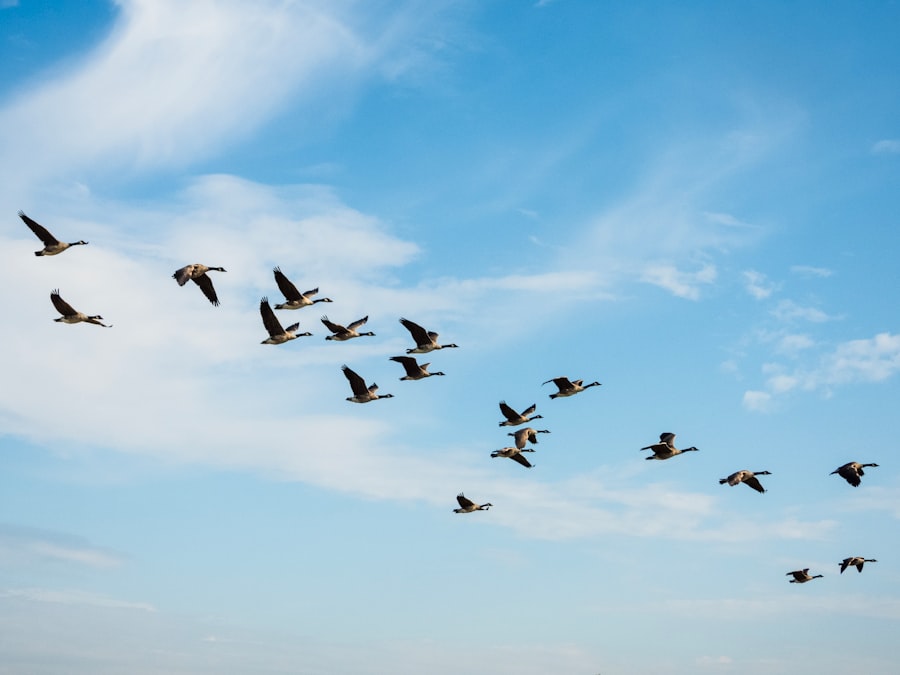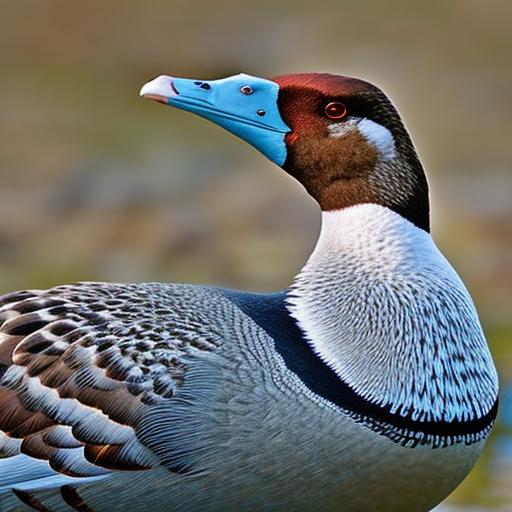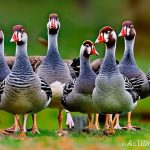Big geese breeds are a popular choice for both hobbyists and farmers alike. These majestic birds not only make great pets, but they also have a variety of practical uses on the farm. Understanding the characteristics and care requirements of big geese breeds is essential for anyone considering adding them to their flock. In this article, we will explore the different aspects of big geese breeds, including their size, temperament, egg-laying abilities, and feeding habits.
Key Takeaways
- Big geese breeds are a popular choice for farming and agriculture due to their size and meat production.
- Understanding the characteristics of big geese breeds is important for selecting the right breed for your needs.
- The top 5 big geese breeds for beginners include Toulouse, Embden, African, Chinese, and Sebastopol.
- The history and origin of big geese breeds can be traced back to ancient times, with some breeds originating in Europe and others in Asia.
- Big geese breeds differ from other poultry in their size, behavior, and habitat requirements.
Understanding the Characteristics of Big Geese Breeds
One of the defining characteristics of big geese breeds is their size and weight. These birds can grow to be quite large, with some breeds reaching up to 30 pounds or more. Their size makes them an impressive addition to any flock, but it also means that they require more space and resources than smaller breeds.
Temperament is another important factor to consider when choosing a big geese breed. While some breeds are known for being docile and friendly, others can be more aggressive or territorial. It’s important to research the temperament of different breeds before making a decision, especially if you have small children or other animals on your property.
Egg-laying abilities vary among big geese breeds as well. Some breeds are known for their prolific egg production, while others may only lay a few eggs per year. If you are interested in raising geese for their eggs, it’s important to choose a breed that is known for its high egg production.
Feeding habits can also vary among big geese breeds. Some breeds are more efficient grazers and can thrive on pasture alone, while others may require supplemental feed to meet their nutritional needs. Understanding the feeding habits of different breeds can help you provide the appropriate diet for your geese.
Top 5 Big Geese Breeds for Beginners
If you’re new to raising geese and are interested in adding a big breed to your flock, here are five breeds that are known for being beginner-friendly:
1. Toulouse: The Toulouse is one of the most popular big geese breeds. They are known for their calm and friendly temperament, making them a great choice for families with children. Toulouse geese are also good egg layers and can produce up to 50 eggs per year.
2. Embden: The Embden is another popular choice for beginners. These geese are known for their white plumage and gentle nature. They are also good egg layers, producing around 40 eggs per year.
3. African: African geese are known for their striking appearance, with their dark gray feathers and bright orange bills and feet. They have a friendly temperament and are good egg layers, producing around 35 eggs per year.
4. Chinese: Chinese geese are smaller than some of the other big breeds, but they still make a great choice for beginners. They have a calm and friendly temperament and are good egg layers, producing around 40 eggs per year.
5. Sebastopol: Sebastopol geese are known for their unique appearance, with their curly feathers. They have a friendly temperament and are good egg layers, producing around 30 eggs per year.
The History and Origin of Big Geese Breeds
Big geese breeds have a long history that dates back to ancient times. The ancient Egyptians and Romans were known to raise geese for both meat and eggs. These early civilizations recognized the value of these birds and bred them selectively to enhance their desirable traits.
In Europe, big geese breeds became popular during the Middle Ages. They were raised on farms and estates for their meat, feathers, and eggs. European breeders continued to refine these breeds over the centuries, resulting in the distinct breeds that we know today.
Big geese breeds were brought to North America by European settlers in the 17th and 18th centuries. They quickly became a valuable asset on farms, providing meat, eggs, and feathers. Today, big geese breeds can be found on farms and homesteads across the continent.
Differences Between Big Geese Breeds and Other Poultry
Big geese breeds have several distinct differences from other poultry species, such as chickens and ducks.
One of the most obvious differences is their size and weight. Big geese breeds can grow much larger than chickens or ducks, with some individuals weighing over 30 pounds. This size difference affects their housing requirements, feeding habits, and overall care.
Feeding habits also differ between big geese breeds and other poultry. Geese are grazers by nature and prefer to eat grass and other vegetation. While they can still benefit from a balanced poultry feed, they require access to pasture or forage to meet their nutritional needs.
Temperament is another area where big geese breeds differ from other poultry. Geese are known for their protective nature and can be more aggressive than chickens or ducks. It’s important to handle geese with care and provide them with plenty of space to roam.
Egg-laying abilities also vary between big geese breeds and other poultry. While chickens are known for their high egg production, geese typically lay fewer eggs per year. However, the eggs that geese do lay are larger and have a richer flavor than chicken eggs.
The Best Ways to Care for Big Geese Breeds

Caring for big geese breeds requires attention to their specific needs and requirements. Here are some key aspects of caring for these majestic birds:
Housing requirements: Big geese breeds require ample space to roam and graze. They should have access to a secure enclosure or pasture during the day and a sheltered area at night to protect them from predators and the elements.
Feeding and watering: Geese should have access to fresh water at all times, as well as a balanced poultry feed. They also benefit from access to pasture or forage, which helps to supplement their diet and provide them with essential nutrients.
Grooming and cleaning: Geese require regular grooming to keep their feathers clean and healthy. This includes bathing in water and preening their feathers. Their living area should also be cleaned regularly to prevent the buildup of waste and parasites.
Exercise and socialization: Geese are social animals and thrive when they have companionship. They should be provided with opportunities for exercise and socialization, such as access to a pond or other water source where they can swim and interact with other geese.
Common Health Issues and How to Prevent Them in Big Geese Breeds
Like any livestock, big geese breeds are susceptible to certain health issues. Here are some common health issues that can affect geese and how to prevent them:
Respiratory infections: Geese can be prone to respiratory infections, especially in damp or crowded conditions. To prevent respiratory infections, provide your geese with a clean and dry living environment, avoid overcrowding, and ensure good ventilation.
Parasites: Geese can be affected by external parasites such as lice and mites. Regularly inspect your geese for signs of infestation, such as feather loss or irritation. Treat any infestations promptly with appropriate parasite control products.
Nutritional deficiencies: Geese require a balanced diet to stay healthy. A lack of essential nutrients can lead to various health issues, including poor growth, feather problems, and reproductive issues. Ensure that your geese have access to a balanced poultry feed and provide any necessary supplements as recommended by a veterinarian.
Preventative measures: In addition to proper nutrition and hygiene, there are several preventative measures you can take to keep your geese healthy. This includes regular veterinary check-ups, vaccinations if recommended, and quarantine procedures for new birds to prevent the spread of diseases.
Breeding Big Geese: Tips and Tricks for Success
Breeding big geese can be a rewarding experience, but it requires careful planning and attention to detail. Here are some tips and tricks for successful breeding:
Selecting breeding pairs: Choose breeding pairs that are healthy, have good conformation, and exhibit the desired traits for the breed. Avoid breeding closely related birds to prevent genetic issues.
Incubation and hatching: Geese eggs require specific conditions for successful incubation and hatching. Maintain a consistent temperature and humidity level in the incubator, and turn the eggs regularly. Monitor the development of the embryos and be prepared to assist with hatching if necessary.
Caring for goslings: Goslings require special care in their early weeks of life. Provide them with a warm and secure brooder, feed them a balanced diet formulated for young waterfowl, and monitor their health closely. Gradually introduce them to outdoor living as they grow older.
The Role of Big Geese Breeds in Agriculture and Farming
Big geese breeds have been an important part of agriculture and farming for centuries. Here are some of the roles they play on the farm:
Meat production: Big geese breeds are known for their flavorful meat, which is often compared to roast beef. They can be raised for meat production, providing a sustainable source of protein for farm families or for sale.
Egg production: While geese may not lay as many eggs as chickens, their eggs are highly prized for their rich flavor and large size. Geese can be raised for egg production, providing a unique product for farm markets or specialty food stores.
Pest control: Geese are excellent grazers and can help control weeds and pests on the farm. They can be used to graze in orchards or vineyards, reducing the need for chemical herbicides and pesticides.
Big Geese Breeds in the Wild: Their Natural Habitat and Behaviors
In the wild, big geese breeds have specific habitat requirements and exhibit certain behaviors. Understanding these natural tendencies can help you provide a suitable environment for your geese:
Migration patterns: Many big geese breeds are migratory and will travel long distances in search of suitable breeding and feeding grounds. If you are considering raising migratory geese, it’s important to provide them with access to open water and ample forage.
Nesting habits: Geese typically build their nests on the ground, near water sources. They prefer secluded areas with tall grass or vegetation for protection. Providing nesting boxes or suitable nesting sites can encourage breeding behavior in captive geese.
Social behaviors: Geese are highly social animals and form strong bonds with their flock mates. They communicate through vocalizations and body language, and they will defend their territory and flock from perceived threats. Providing ample space and companionship is important for the well-being of your geese.
Big geese breeds are a fascinating and rewarding addition to any flock or farm. Understanding their characteristics, care requirements, and history can help you make an informed decision about adding them to your property. Whether you’re looking for a friendly pet or a productive farm animal, big geese breeds offer a unique combination of beauty, utility, and companionship. Consider adding these majestic birds to your life and experience the joy they bring.
If you’re interested in big geese breeds, you might also want to check out this informative article on how to insulate a chicken coop. Proper insulation is crucial for maintaining the health and well-being of your poultry, including geese. It provides them with a comfortable environment and helps regulate temperature during extreme weather conditions. To learn more about insulating your coop, click here: https://poultrywizard.com/keeping-chickens/how-to-insulate-a-chicken-coop/.
FAQs
What are big geese breeds?
Big geese breeds are domesticated geese that are larger in size compared to other breeds. They are usually raised for meat, eggs, and feathers.
What are some examples of big geese breeds?
Some examples of big geese breeds include Toulouse, Embden, African, and Chinese geese.
What is the average weight of big geese breeds?
The average weight of big geese breeds can range from 10 to 20 pounds, with some breeds weighing up to 30 pounds.
What is the lifespan of big geese breeds?
The lifespan of big geese breeds can range from 10 to 20 years, depending on the breed and how well they are cared for.
What is the temperament of big geese breeds?
Big geese breeds can be docile and friendly, but they can also be aggressive and territorial, especially during breeding season.
What is the ideal environment for big geese breeds?
Big geese breeds thrive in open spaces with access to water for swimming and grazing areas for foraging. They also need shelter from extreme weather conditions.
What is the diet of big geese breeds?
Big geese breeds are omnivores and their diet consists of grass, grains, insects, and small animals. They also require access to clean water for drinking and swimming.
What are some common health issues that big geese breeds may face?
Some common health issues that big geese breeds may face include respiratory infections, egg binding, and foot problems. Regular veterinary check-ups and proper care can help prevent these issues.
Meet Walter, the feathered-friend fanatic of Florida! Nestled in the sunshine state, Walter struts through life with his feathered companions, clucking his way to happiness. With a coop that’s fancier than a five-star hotel, he’s the Don Juan of the chicken world. When he’s not teaching his hens to do the cha-cha, you’ll find him in a heated debate with his prized rooster, Sir Clucks-a-Lot. Walter’s poultry passion is no yolk; he’s the sunny-side-up guy you never knew you needed in your flock of friends!







